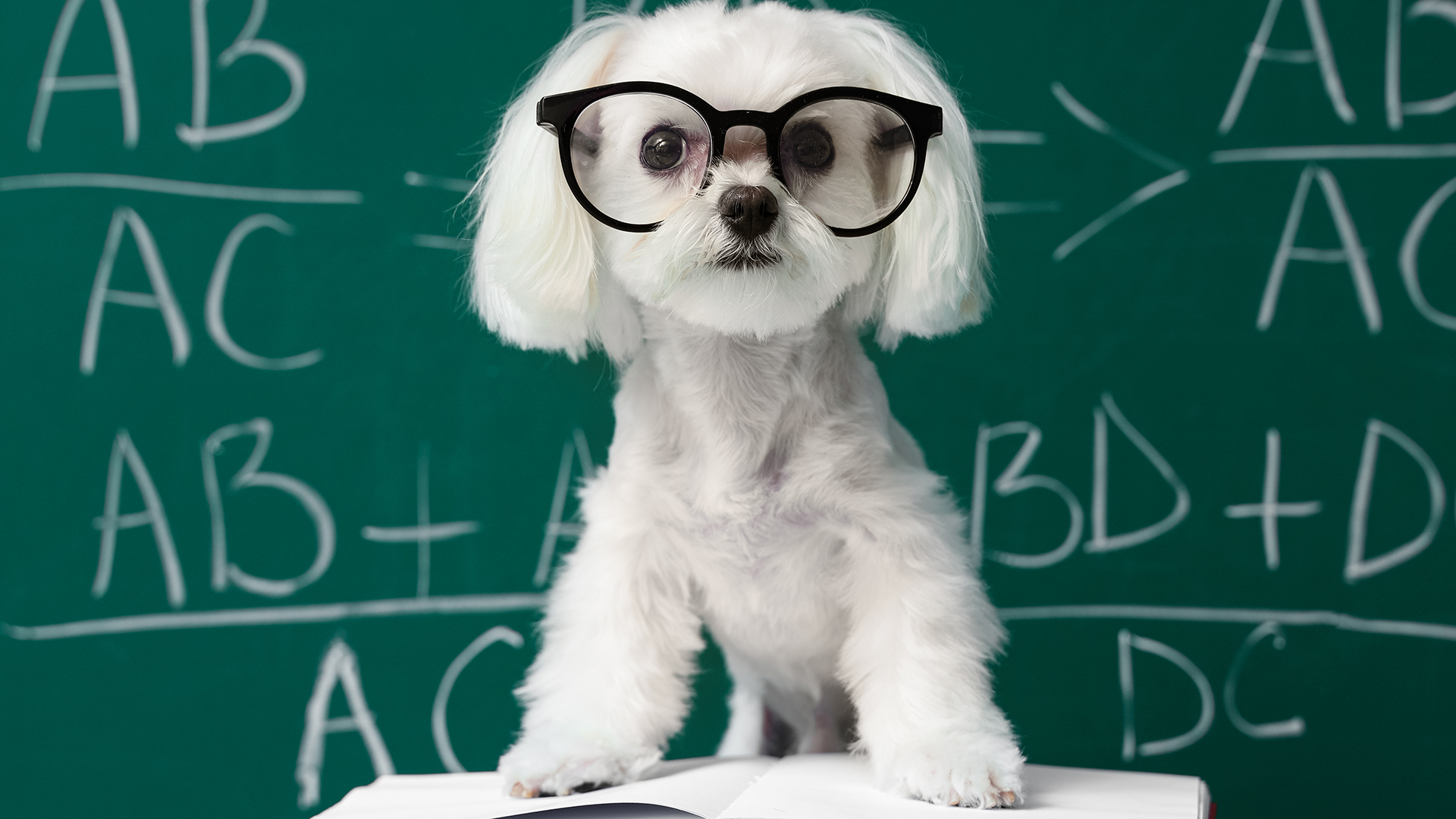Raising a puppy can be one of the most rewarding (and delightfully chaotic) experiences you’ll ever have, filled with adorable moments, hilarious mishaps, and endless learning for both you and your furry companion.
But those early months are a critical period for shaping your puppy into a well-mannered, confident, and happy dog. Puppies are little sponges during this stage, soaking up everything from how to greet people politely to how to feel secure when left alone.
The behaviors, skills, and experiences they develop before their second birthday (let’s take that reference point) can stick with them for life, so it’s essential to focus on positive lessons during this prime learning window.
Ready to set your pup up for success? Here are vital lessons every pup should learn before they’re grown-up!
1. Socialization With People And Dogs
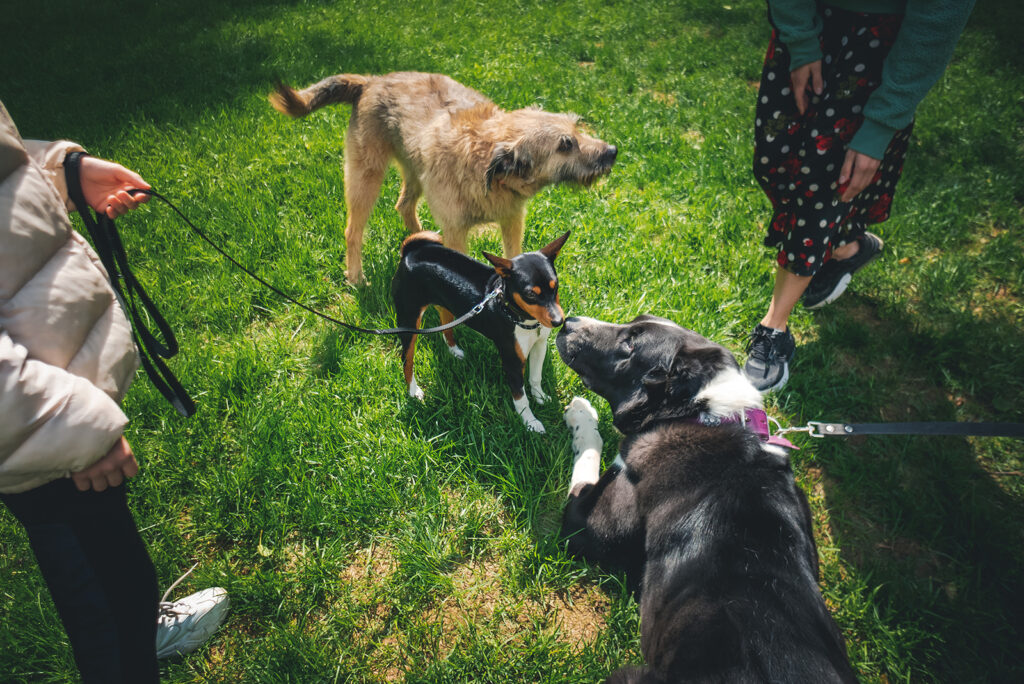
Early socialization is absolutely vital for raising a well-rounded, confident dog who can handle all life throws their way. Puppies experience a critical socialization period between 3 and 16 weeks, where they’re most open to new experiences and learning what’s safe and fun versus scary and threatening!
This window is prime time to introduce them to a wide variety of people, dogs, and environments. Let your puppy meet friendly strangers, experience different sounds like doorbells and vacuum cleaners, and visit dog parks or pet-friendly stores.
The more positive, controlled experiences they have, the less likely they’ll develop fear or aggression issues later in life. Remember, the goal is confidence, not overwhelm, so keep it fun and rewarding with treats and praise.
Think of it as giving your pup their own social calendar to prepare them for the world!
2. Basic Commands
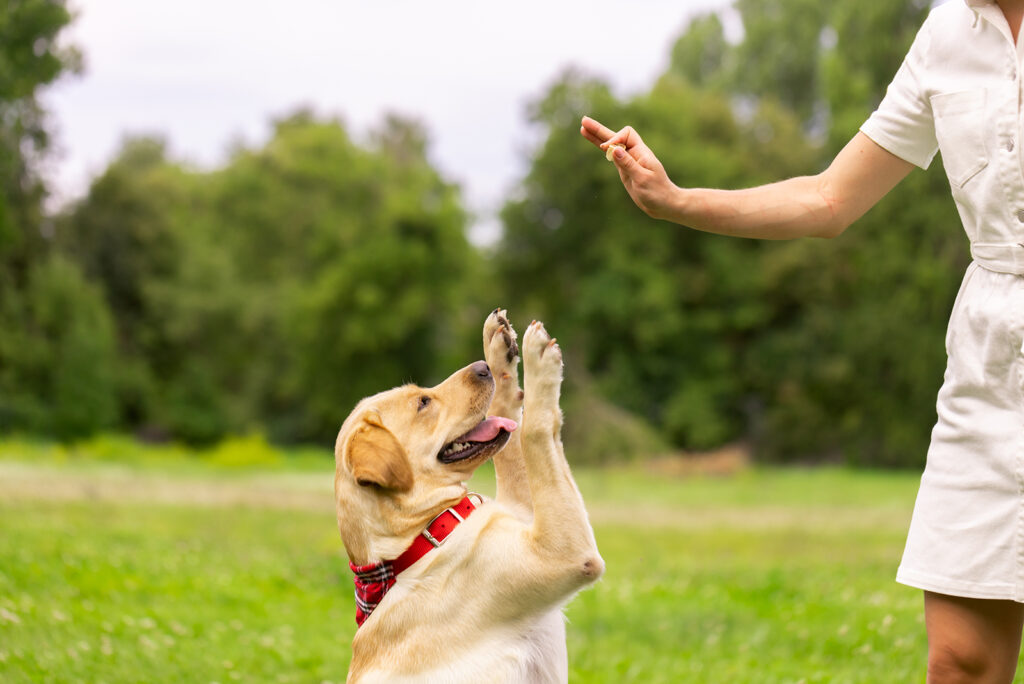
Teaching basic commands like “Sit,” “Stay,” and “Come” isn’t just for showing off at the dog park! It’s a crucial part of keeping your pup safe and building a strong bond based on trust and communication.
Imagine your dog darting toward a busy road or a squirrel; a solid “Stay” or “Come” can literally save their life. Start training with short, fun sessions using positive reinforcement.
Treats, toys, and plenty of enthusiastic praise. Puppies learn best when they’re engaged, so keep it upbeat and avoid scolding if they don’t get it right away. Consistency is key!
Work these commands into daily routines, like asking for a “Sit” before meals or a “Stay” at the door before walks. The earlier you build these habits, the easier it becomes to shape a well-behaved adult dog who listens when it matters most.
3. Crate Training For Safety And Comfort
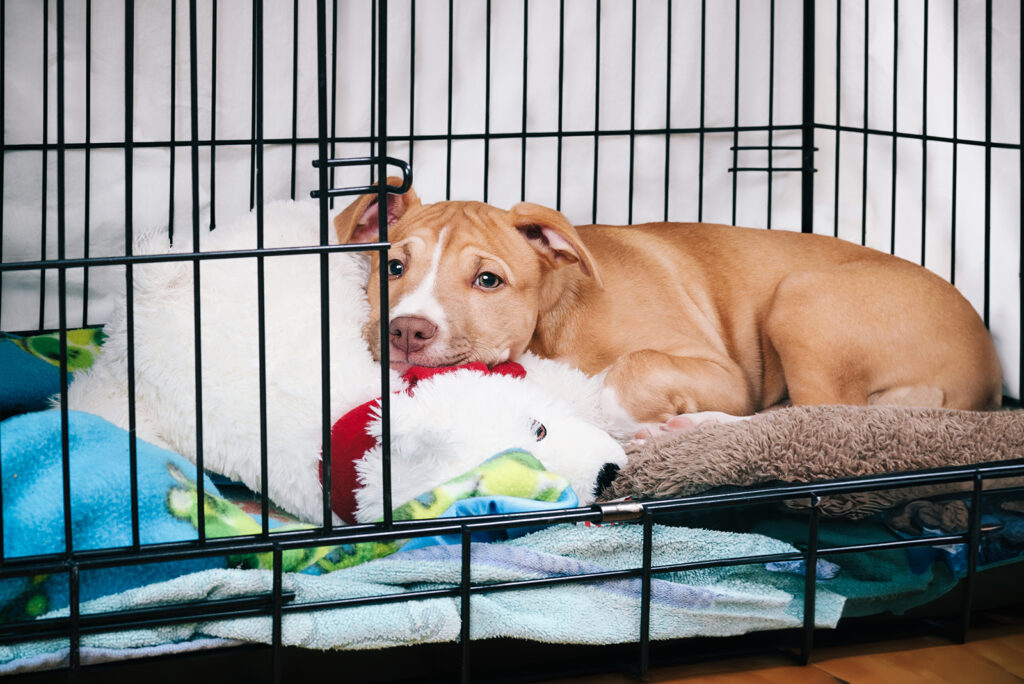
Crate training sometimes gets a bad rap, but when done correctly, it can be a total game-changer for both you and your pup. Dogs naturally seek out den-like spaces, so a crate can help satisfy this instinct, giving your pup a spot where they feel secure.
It’s also a powerful tool for preventing destructive behaviors like chewing furniture or getting into household trouble when you’re not home to supervise. But perhaps the biggest perk? Crate training works wonders for housebreaking since dogs instinctively avoid soiling their sleeping areas.
The key is to make it a positive experience! Never use the crate as punishment. Introduce it gradually with comfy bedding, toys, and treats, keeping the door open at first so your pup can explore freely.
Once they’re comfortable, short stays will teach them independence while keeping them safe. Done right, the crate becomes their happy, stress-free retreat, not a place of confinement.
4. Handling And Grooming
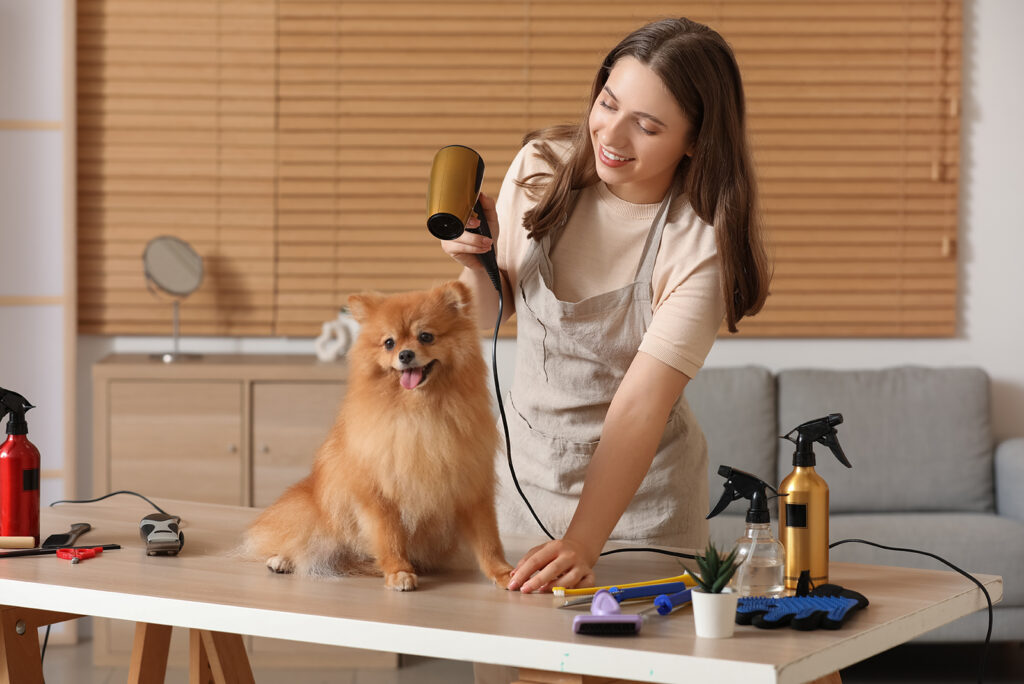
Helping your puppy get comfortable with being touched all over their body is essential for long-term health and care. Whether it’s a vet visit, a nail trim, or a bath, proper handling makes these experiences easier (and way less stressful) for both you and your pup.
Start by gently touching their paws, ears, belly, and even their teeth while rewarding calm behavior with treats and praise. The goal is to teach them that being handled is nothing to fear! It’s just part of life!
Gradually work up to activities like brushing and wiping their paws after walks. Early, positive grooming sessions help prevent your puppy from becoming fearful or squirmy when it’s time for more serious tasks like nail clipping or professional grooming.
Make it fun! Incorporate short sessions, plenty of treats, and a calm, cheerful tone so your puppy learns that handling equals love and treats, not stress.
5. Walking On A Leash
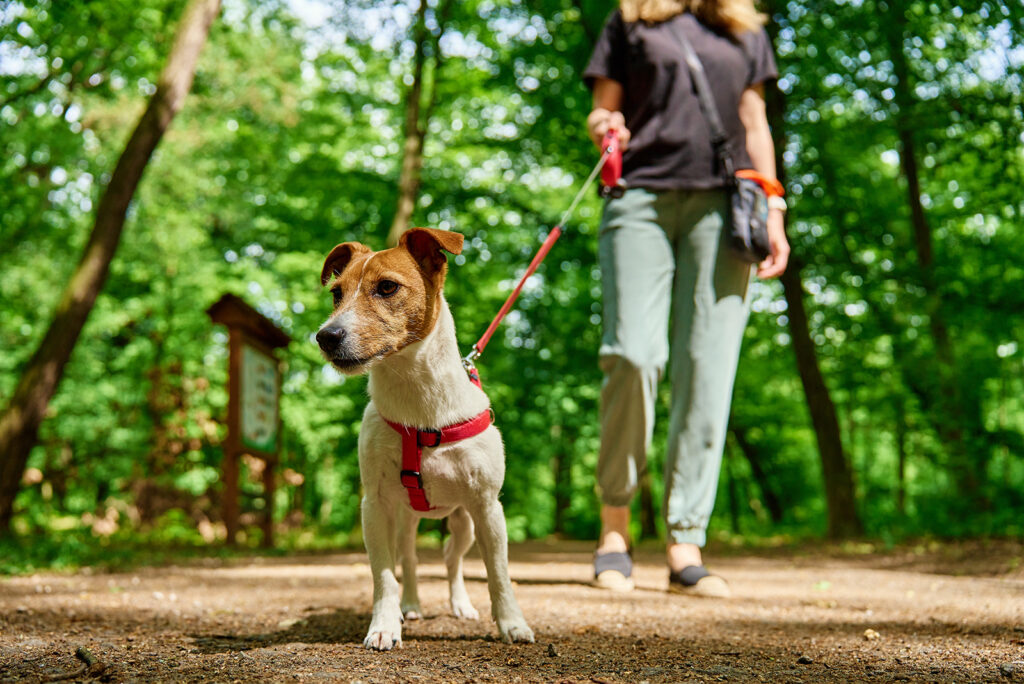
Leash training is about so much more than just keeping your pup from pulling. It’s teaching them how to explore the world safely, confidently, and respectfully. When done right, it can turn daily walks into a fun bonding experience for both of you instead of a tug-of-war competition.
Start by introducing your puppy to the leash indoors, letting them wear it around so they get comfortable with the feeling. Once they’re used to the leash, head out for short walks in calm, low-distraction environments.
Positive reinforcement is key here too! Reward your pup with treats and praise when they stay close and walk nicely without tugging. Keep sessions short at first to avoid overwhelming them.
If they start pulling, stop walking and wait until the leash loosens, then continue. Consistency and patience are essential! Remember, you’re teaching your pup how to explore the world safely while keeping you both connected and stress-free.
With practice, you’ll have a pup who’s a joy to walk!
6. Potty Training Consistency
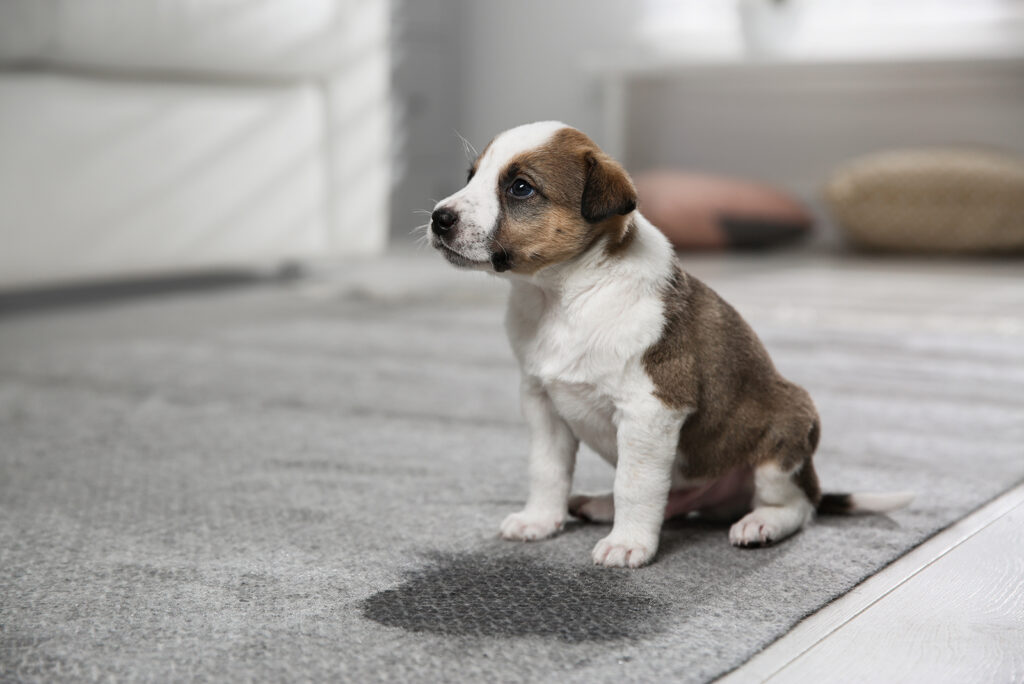
Potty training can be one of the most challenging parts of raising a puppy, but with patience, consistency, and a solid routine, it becomes much easier. Puppies thrive on structure, so establish a predictable schedule for meals, potty breaks, and playtime.
Take your puppy out first thing in the morning, after meals, naps, and play sessions, as well as right before bedtime. Each successful bathroom break outdoors should be rewarded with enthusiastic praise and a treat!
Accidents are bound to happen, so stay calm and avoid scolding. Instead, clean up thoroughly with an enzymatic cleaner to remove lingering scents that could tempt repeat accidents.
Keep a close eye on your puppy for signs they need to go, like circling or sniffing around. The more consistent you are, the faster your pup will learn that outside is the only place for potty breaks.
Stick with it, and soon you’ll have a house-trained pup who knows the drill!
7. Bite Inhibition
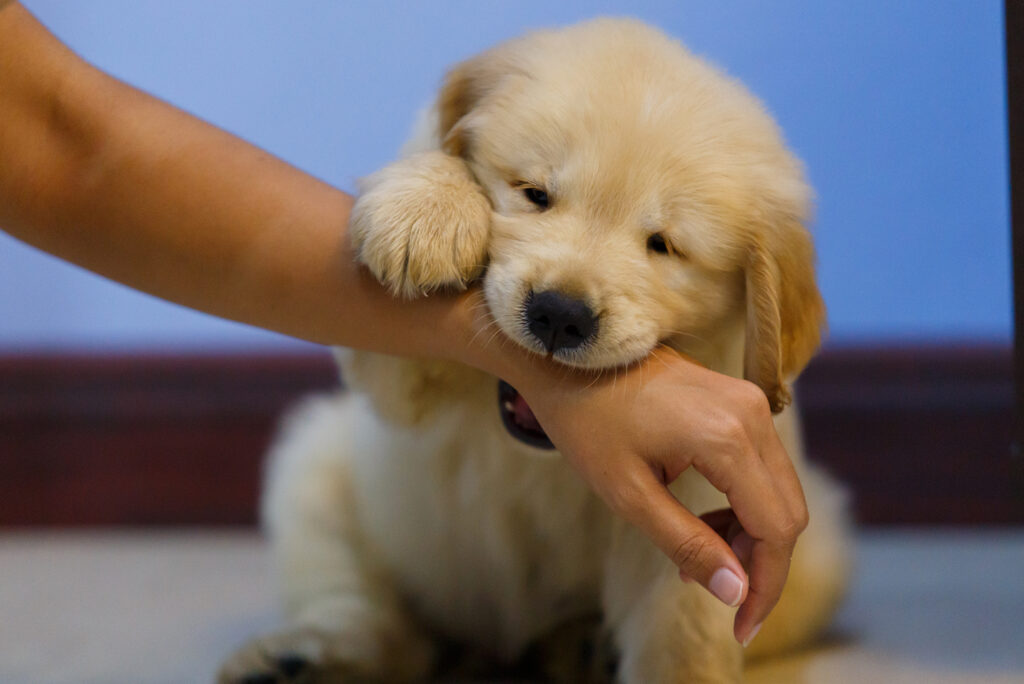
Puppies are curious and explore the world around them using their mouths, but while those tiny teeth might be cute, they can also be surprisingly sharp! Teaching bite inhibition early on prevents painful nipping as your puppy grows.
It’s all about helping them learn to control the pressure of their bite during play. When your pup nips too hard, let out a gentle but firm “ouch!” and stop the play session immediately.
This teaches them that biting too hard results in losing attention and fun. Puppies learn best through repetition, so consistency is key. You can also redirect their mouthing behavior by offering a chew toy instead.
Encouraging gentle play now will help ensure they grow into a dog that can interact safely with people and other pets! Especially important if you have children or frequent visitors in your home.
8. Positive Exposure To Noises
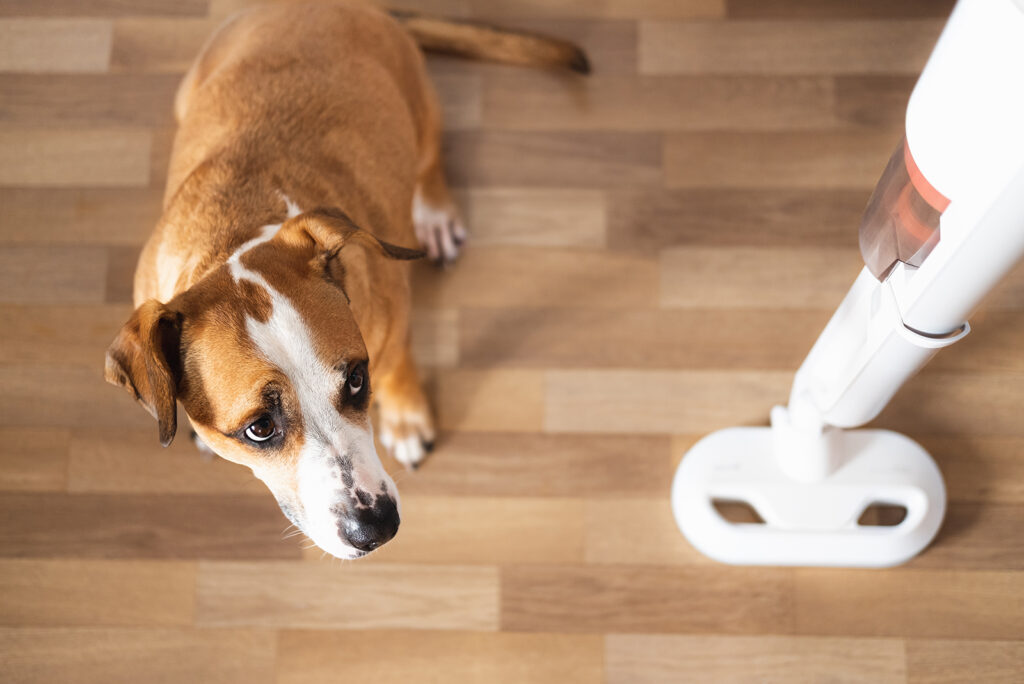
Vacuum cleaners, doorbells, fireworks, thunder. Everyday noises that seem harmless to us can feel like a full-on horror movie soundtrack for a puppy if they’re not introduced properly.
Puppies can be especially sensitive to loud or unfamiliar sounds, which can lead to fear and anxiety later in life if not addressed early on. The goal is to desensitize them gradually.
Start by playing recordings of various noises at a low volume while rewarding calm behavior with treats and praise. Slowly increase the volume over time as your pup becomes more comfortable.
Real-world exposure helps too! Run the vacuum cleaner in the next room while your puppy plays, or have a friend ring the doorbell while rewarding calm behavior.
Turning noise exposure into a positive experience helps build their confidence, so they won’t panic when faced with unexpected sounds in the future.
9. Sharing And Resource Guarding Prevention
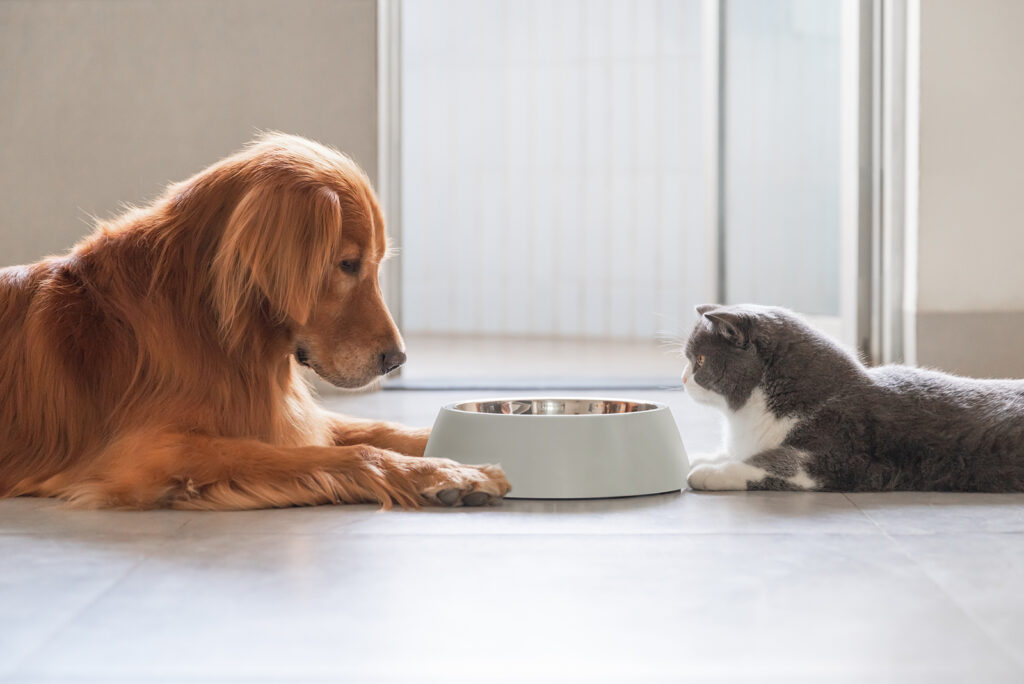
Resource guarding, which often shows up as growling, snapping, or stiffening when your puppy has food or a toy, can be a serious issue if not addressed early on. But don’t worry!
Preventing it is easier than you think with some proactive training steps. Start by hand-feeding your puppy during mealtime. This helps them associate your hands near their food with positive experiences.
Gradually, you can practice gently taking their bowl mid-meal and offering a treat before returning it. The idea? To show your puppy that giving something up often results in something even better!
Another great technique is playing the “trade game”! Offer your pup a toy, let them enjoy it for a moment, then trade for a high-value treat. This reinforces the idea that sharing is rewarding, not threatening.
Early exposure to people and other pets around food can also help. Remember, it’s all about creating a positive, trust-based environment so your puppy feels secure, not defensive, around their prized possessions.
10. Alone Time And Preventing Separation Anxiety
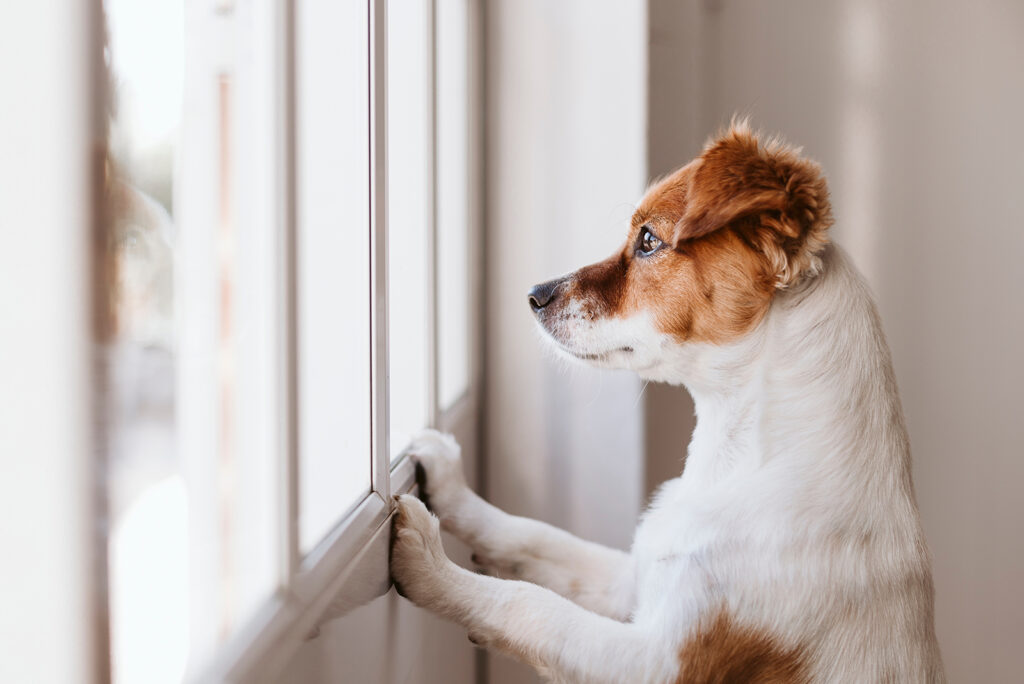
Teaching a puppy to be okay alone is absolutely crucial for preventing separation anxiety, a condition where dogs become overly distressed when left alone. It’s important to build their confidence early on to avoid issues like excessive barking, destructive behavior, or bathroom accidents when you’re away.
Start with short separations! Leave the room for a few minutes while they stay safely in their crate or a puppy-proofed area, then return calmly without making a big fuss.
Gradually increase the time alone while reinforcing calm behavior with treats and praise. Crate training can play a helpful role here, giving your pup a cozy, secure space where they feel safe.
You can also leave them with puzzle toys or food-dispensing toys to keep their mind busy while you’re out. Staying calm during departures and arrivals helps too. Over-the-top greetings can create unnecessary excitement and stress.
By building this independence early, you’ll raise a self-assured pup who can handle alone time like a pro!
11. Calm Behavior In The Car
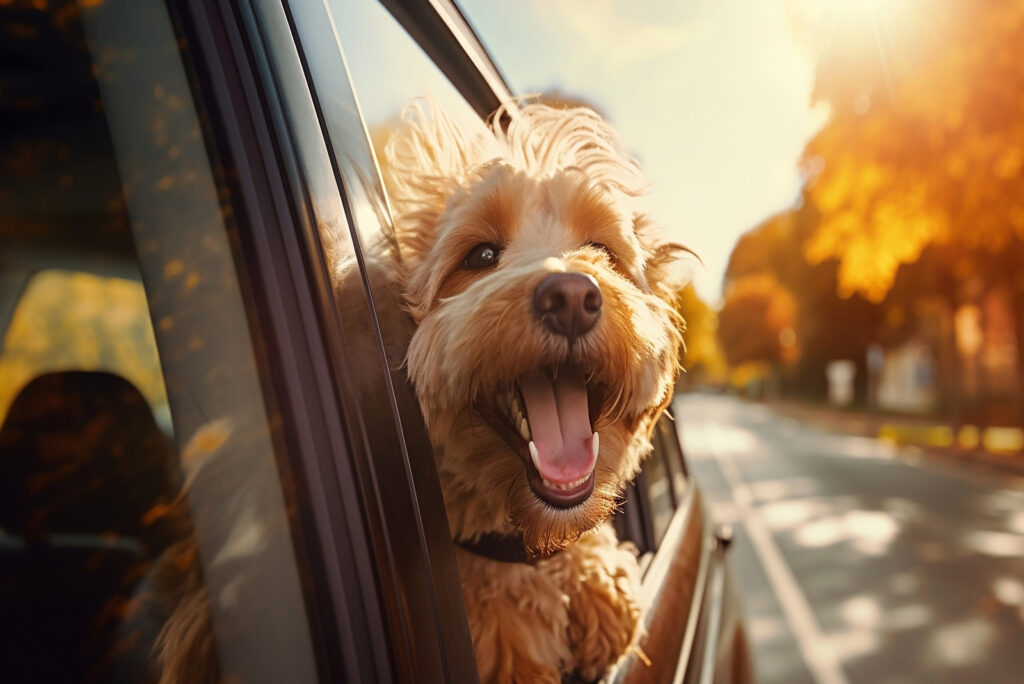
Car rides can be overwhelming for puppies if they’re not introduced to the experience in a positive way, so teaching calm behavior early on is essential for stress-free travels.
Imagine your pup bouncing around the back seat, barking at every passing car! Not fun, right? To avoid this, start with short, positive trips, like a quick loop around the block or a fun visit to a nearby park.
Always use a secure crate or seatbelt harness for safety. Keeping your pup restrained protects them in case of sudden stops. Make the experience enjoyable by bringing along their favorite treats and toys, and offer praise when they stay calm.
Gradually increase the length of the rides as they become more comfortable. If your pup shows signs of stress, such as whining or excessive panting, slow down the process and keep the experiences shorter and more positive!
12. Proper Play And Interaction With Kids
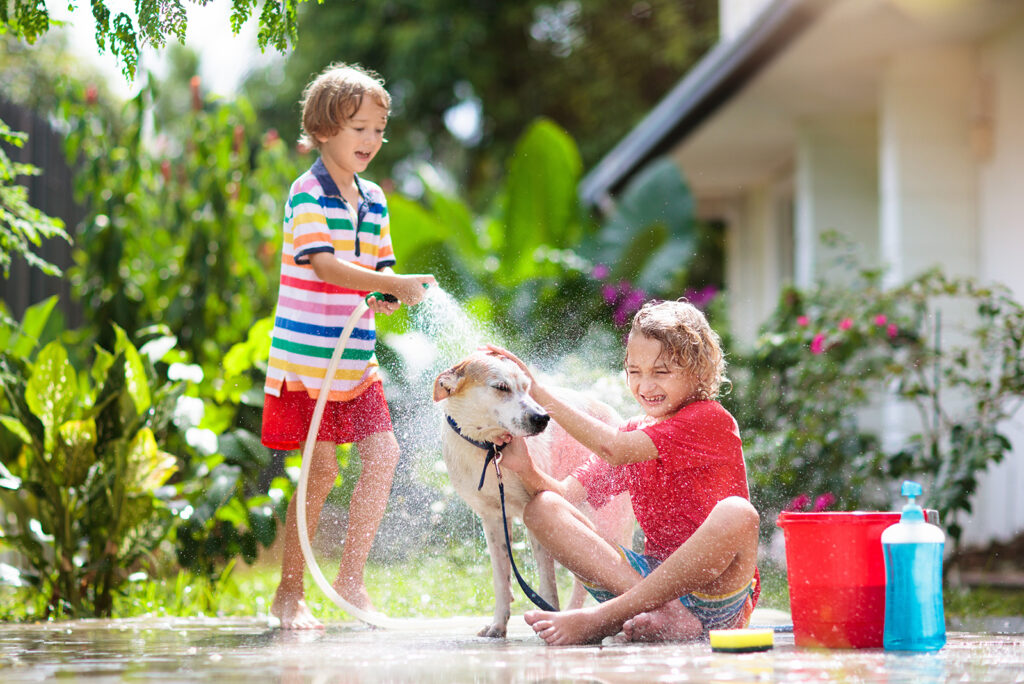
If you have children, teaching your puppy how to interact gently is crucial for creating a safe and positive environment for everyone involved. Puppies, especially when excited, can nip, jump, and play rough.
The idea here is supervision and consistent guidance. Encourage calm, gentle play by showing kids how to properly interact with the puppy, such as using soft voices, avoiding rough tugging, and respecting the pup’s space.
Teach your puppy that calm behavior equals rewards by reinforcing positive play with treats and praise. Supervised playdates are also great for reinforcing boundaries on both sides.
Remind children to never disturb a sleeping or eating puppy, as this can lead to defensive reactions. Early, positive experiences help your puppy understand how to behave around kids while ensuring everyone stays safe and happy.
Plus, when done right, it builds a beautiful bond between your child and their furry best friend.

